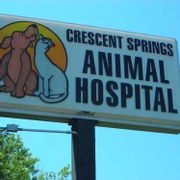The Best Animal Clinic in Crescent Springs Discusses the Symptoms & Treatments for Mange

While it is normal for dogs to have a small number of mites on their bodies, mange will develop if these parasitic mites begin to spread uncontrollably on your dog's skin or hair. Pet owners in Northern Kentucky and Cincinnati, should learn how to recognize the early signs of mites in order to quickly bring their pet to Crescent Springs Animal Hospital for treatment. This animal clinic treats both sarcoptic and demodectic mange in dogs.
Sarcoptic Mange
Pet owners should be on high alert if they suspect one of their dogs has sarcoptic mange, as it is highly contagious. Symptoms of this form of mange include intense scratching, skin rash, crust formation, and hair loss (usually as a side effect of the scratching).
Generally, dogs will develop this type of mange when they come into contact with other infected animals at a kennel, groomer, or dog park. After the exposure, symptoms begin to appear around two to six weeks later, and you should visit your local pet hospital for treatment at first notice.
After ruling out other possible infections, your vet will most likely use a scabicide or scabicidal shampoo to kill all living mites on the skin. Ongoing treatment will be necessary to remove all of the mites that have not yet hatched, and your pet should have limited contact with other animals during this time.
 Demodectic Mange
Demodectic Mange
Most dogs live with demodectic mites without any issue, but mange can develop if the dog is unable to keep the population of the mites on its hair follicles under control. Unlike sarcoptic mange, which can occur as a result of poorly kept living conditions, demodectic usually arises in young dogs that have not developed a properly working immune system.
Most puppies get demodectic mites by their mother, and if the puppy is not immune to the mites, it will develop full-blown mange. Symptoms of this occurring include lesions, hair loss, crusty and red skin, and sometimes a greasy appearance. Generally, these signs will begin around the head and muzzle area around three to six months of age.
To confirm that it is demodectic mange, you should bring your dog to an animal clinic for a biopsy. Older dogs should also be screened for other diseases for proper treatment. After confirmation, your vet will most likely use a topical medication for generalized mange. Usually, localized mange will resolve on its own as the puppy develops an immunity to the mites.
If you suspect your dog might have mange, do not hesitate about bringing them to a pet hospital for treatment. To schedule an appointment with Crescent View Animal Hospital today, call (859) 331-6608, and learn more about this animal clinic by visiting them online.
About the Business
Have a question? Ask the experts!
Send your question

